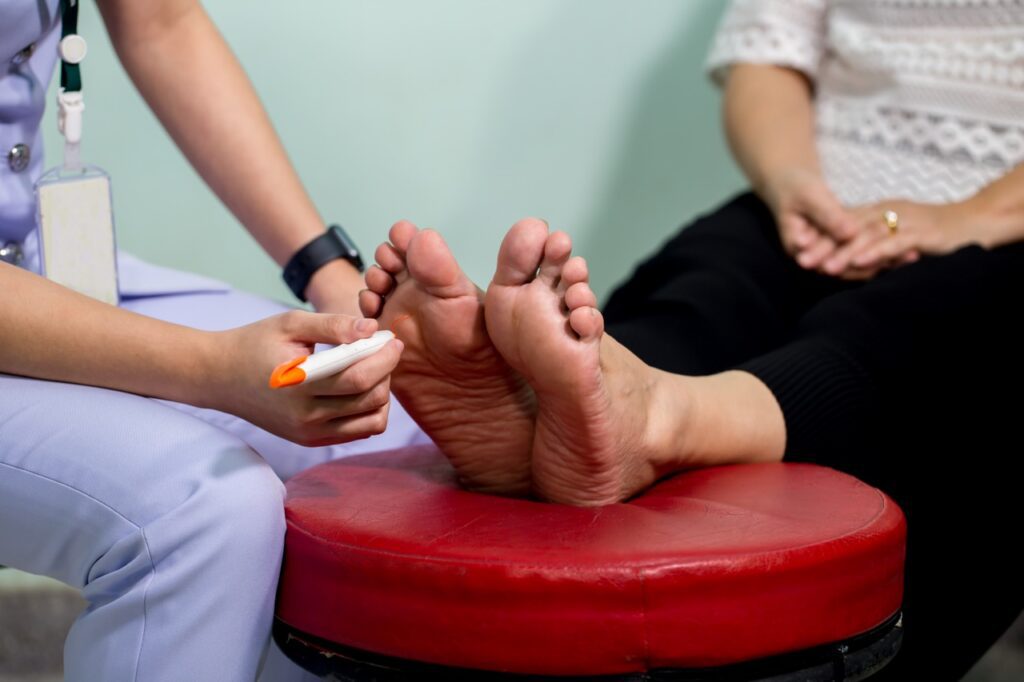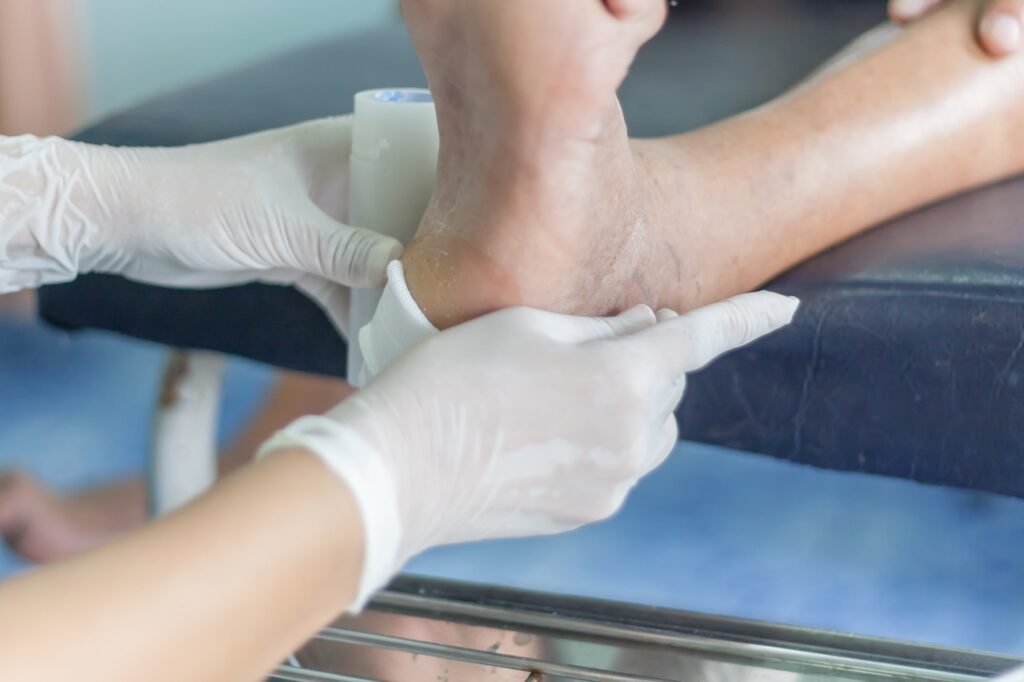Table of Contents
Introduction
Diabetic wound care is essential for maintaining the health and well-being of individuals with diabetes. The increased risk of foot and ankle complications, combined with potential delays in the healing process, can lead to severe consequences if left untreated. Our team of specialists is here to ensure that you receive the best possible care and guidance in managing your diabetic wounds.
What Is Diabetic Wound Care?
Diabetic wound care is the process of treating and managing wounds that occur in people with diabetes, specifically on the feet and ankles. These wounds can be challenging to heal due to factors such as reduced blood flow and nerve damage, making proper care crucial for avoiding complications and promoting healing.
What Causes Diabetic Wounds on the Feet and Ankles?

Types of Wound Care
Debridement
Wound Dressings
Specialized wound dressings play a vital role in the healing process. They are designed to maintain a moist environment, protect the wound from bacteria, and absorb excess fluids.
There are various types of dressings available, including hydrocolloids, foam dressings, alginates, and hydrogels. The choice of dressing depends on the wound type, location, and healing stage.
Negative Wound Pressure Therapy
NPWT, also known as vacuum-assisted closure (VAC), is a treatment that uses vacuum pressure to remove fluids, reduce edema, and promote the growth of healthy tissue.
This therapy involves placing a foam dressing inside the wound, sealing it with a transparent adhesive film, and connecting it to a vacuum pump. The continuous or intermittent suction helps draw wound edges together, stimulates granulation tissue formation, and enhances blood flow to the wound area.
Antibiotic Creams
Topical antibiotic medications are applied to the wound to prevent or treat infections. These creams are often used in combination with other wound care treatments, such as dressings or debridement.
The choice of antibiotic cream depends on the type of bacteria present, the severity of the infection, and the patient’s medical history. It is essential to use these medications as prescribed to minimize the risk of antibiotic resistance.
Skin Substitutes
Skin substitutes are advanced materials that can aid in wound closure and provide a protective barrier for the wound. They can be derived from biological sources, such as human or animal tissue, or synthetic materials designed to mimic the structure and function of the skin.
Skin substitutes can be used for various wound types, including diabetic ulcers, pressure ulcers, and burns. They promote healing by providing a scaffold for cell growth, stimulating the body’s natural repair mechanisms, and reducing pain and inflammation.
Indeed there are several types of wound care treatments available, each with unique benefits and applications; the choice of treatment depends on the wound characteristics, the patient’s overall health, and the healthcare provider’s expertise. Effective wound care is crucial for promoting healing, minimizing complications, and improving the quality of life for individuals with diabetic wounds.

Why is it Important to Get These Wounds Treated?
Open Lacerations
Infections
Ulcers
Amputation Risk
Reduced Healing Capacity
Neuropathy Complications
Overall Health
Proper wound care can significantly impact an individual’s overall health and well-being. By addressing diabetic wounds promptly, patients can avoid complications that can exacerbate other health conditions, such as heart disease, kidney disease, or vision problems.
As you can see, it is vital for individuals with diabetes and/or neuropathy to seek treatment for their wounds as soon as possible. Proper care and early intervention can prevent further complications, enhance healing, and improve the patient’s overall quality of life.
Advanced Wound Care
Our team of skilled professionals is equipped to handle a wide range of wounds, from small to large, that may not be healing on their own. We utilize advanced wound care techniques and state-of-the-art technology to provide the best possible care for our patients.
If you or a loved one is experiencing a diabetic wound or any complications related to diabetes, do not hesitate to reach out to our offices for help. Our compassionate and knowledgeable team is here to provide the care and support you need to ensure proper healing and improved overall health.
Contact us today to schedule an appointment and take the first step toward effective diabetic wound care.
Looking to schedule an appointment with a physician?
or by clicking the Schedule Online button!



